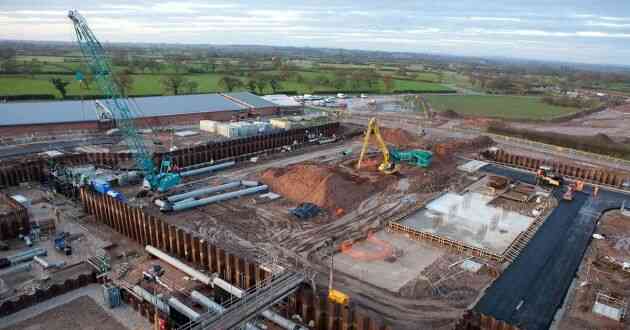4 Ways To Make Your Construction Projects More Eco-friendly
- - Category: Constrution
- - 17 Jan, 2023
- - Views: 252
- Save

It's important that even while we do our work, we do what's best for the environment. Here are some ways to stay green.
Construction projects have a significant impact on the environment. From the materials used in construction to the energy required to power the building, these projects can have a huge environmental footprint and permanently disrupt the former ecosystem that was established. You can never completely erase a construction site’s impact on the surrounding nature of an area, but with a few tweaks to your materials and practices, you can make your construction project more eco-friendly and reduce its more negative environmental impact. Here are four ways to go green with your next project.
Recycle or Reuse Materials
Construction projects can be an incredibly eco-friendly endeavor if done with the right set of tools and materials. By recycling or reusing construction materials, like bricks, metals, and concrete, builders can drastically reduce their carbon footprint by reducing the use of new raw materials. Not only is construction recycling cost-effective and can bring down construction costs for clients, but it also gives the builder greater control over the construction time frame since fewer resources need to be purchased.
Choose Sustainable Building Materials
When it comes time to buy new materials for your construction project, look for ones that are sustainably sourced and produced, such as those made from recycled content or renewable resources like bamboo. You should also consider using local suppliers whenever possible; this reduces transportation costs and emissions associated with getting goods from one place to another. Additionally, look for products that have been certified by organizations such as LEED (Leadership in Energy & Environmental Design) and FSC (Forest Stewardship Council). These certifications ensure that the products meet certain sustainability standards and are produced responsibly.
Reduce Energy Consumption
Construction projects require a lot of energy — both during construction itself and once the building is up and running — so it’s important to reduce your energy consumption whenever possible. One way to do this is by incorporating renewable energy sources into your projects such as solar panels or wind turbines; this not only helps offset some of your energy consumption but also creates additional revenue by selling excess electricity back into the grid. Additionally, you should consider investing in energy-efficient lighting systems and HVAC systems that use less electricity than traditional ones; this will help lower your utility bills over time while reducing emissions from power plants associated with electricity generation.
Create Green Spaces
Incorporating green spaces into your construction project is another great way to make it more eco-friendly. This could include planting native vegetation around the site or building rooftop gardens for residents to enjoy; both options add natural beauty while helping absorb carbon dioxide emissions and purify air quality within urban environments. You should also consider adding rainwater collection systems so that water can be reused instead of being discharged into sewers; this reduces water consumption while helping irrigate nearby greenery at no extra cost!
Making your construction projects more eco-friendly doesn’t have to be difficult – there are plenty of simple steps you can take that don’t require a lot of effort but still make a big difference in terms of reducing emissions and conserving resources like water and energy. By recycling or reusing materials wherever possible, choosing sustainable building materials, investing in energy-efficient technology, and creating green spaces onsite you can easily reduce the environmental impact of any construction project without sacrificing budget or schedule constraints! With just a few small changes you can help create an eco-friendly future for everyone.



